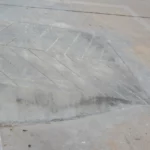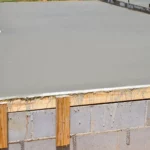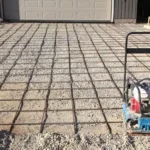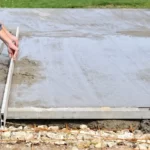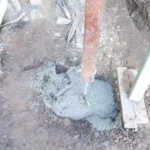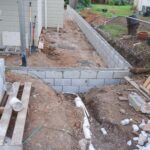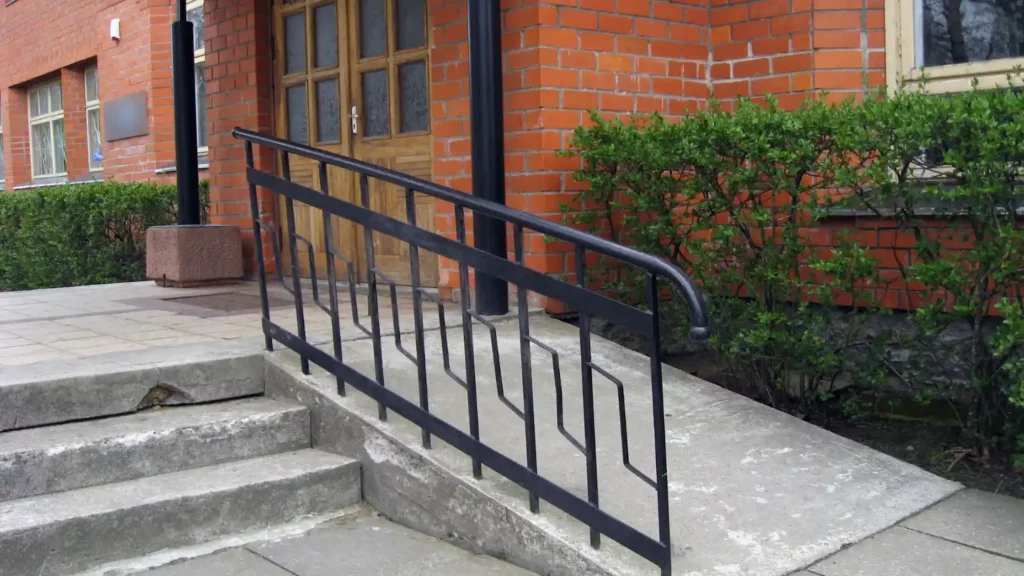
Ramps play an important role in improving home accessibility, especially for people living with mobility challenges. Whether they are wheelchair users, elderly residents, or individuals recovering from an injury, safe and reliable access to and from the home is essential.
For NDIS participants and those undertaking funded home modifications, understanding your ramp options — and what makes a structure truly compliant and cost-effective — is key to creating a safer and more functional space. Concrete ramps are a common choice due to their long-term reliability, but what features make them truly accessible and NDIS-compliant?
Understanding Home Modifications
Home modifications are custom-built changes to a participant’s home that help them access and use areas of their home. These modifications can be minor changes or more complex alterations, all designed to improve the safety, accessibility, and usability of the home. In Australia, home modifications are regulated by the National Disability Insurance Scheme (NDIS) and must comply with relevant laws and regulatory frameworks, including the National Construction Code and Australian Standards. The NDIS provides funding for home modifications that are considered reasonable and necessary to support the needs of participants.
When considering home modifications, it’s essential to work with a qualified home modification assessor. This professional will evaluate the participant’s needs and offer recommendations for modifications that enhance their safety and accessibility. The assessor will take into account factors such as the participant’s mobility level, cognitive abilities, and daily living needs, as well as the layout and design of the home. This ensures that the modifications meet the participant’s needs while complying with Australian Standards and safety regulations.
Planning Home Modifications for Accessibility
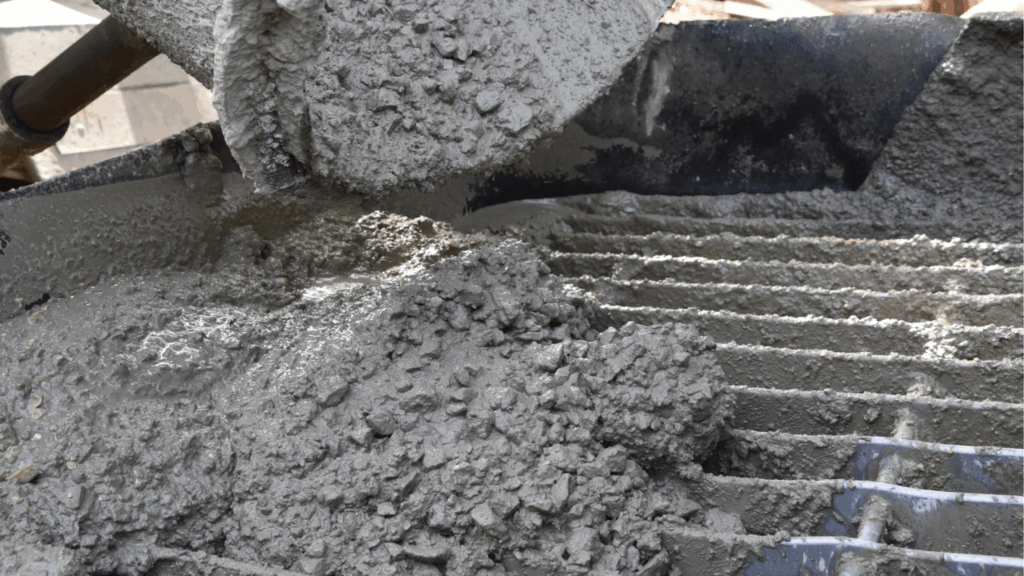
If you’re planning NDIS-funded modifications, the goal is to make your home more suitable for daily life while staying within budget. One of the most common structural changes for accessibility is the installation of a wheelchair or threshold ramp.
NDIS funding can help cover the cost of essential modifications like:
- Creating wheelchair-accessible pathways to entrances
- Installing ramps at entryways or vehicle access points
- Widening pathways or doorways to allow for more room
- Adjusting the slope and layout of the ramp to ensure safety and ease of use
- Constructing ramps according to Australian Standards 1428.1 – 2009 to ensure safety and accessibility
When you’re working with a contractor or home mod provider, it’s important to factor in the ramp’s gradient, length, rise, and available space — all of which will determine the cost, construction time, and compliance with Australian standards. Choosing a concrete solution gives you the flexibility to design ramps that meet both regulatory and practical needs — whether you’re adding one to your home, office, or shared facilities.
Advantages of Concrete Wheelchair Access Ramps
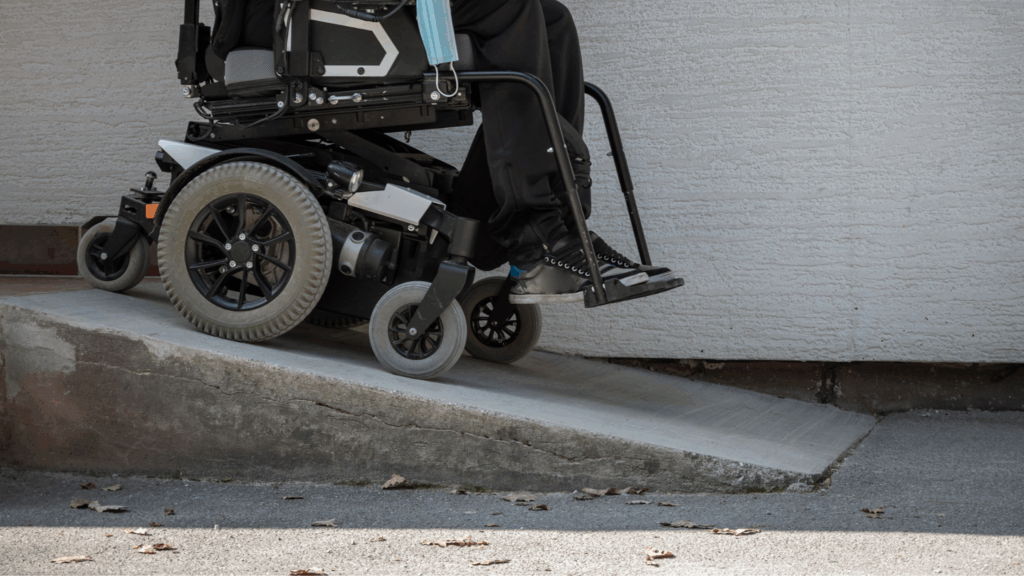
Unlike temporary or rubber ramps, concrete ramps are permanent structures that offer long-term benefits across a wide range of accessibility needs.
Here’s why concrete ramps are often the preferred solution:
- Strength and Durability: Once installed, concrete ramps can withstand significant weight, weather, and wear — making them suitable for both residential and commercial ramps.
- Customisable to Site Needs: Concrete can be poured and shaped to match specific slope ratios, vertical rises, and dimensions of your property, ensuring they meet the required specifications under Australian Standards.
- Low Ongoing Maintenance: Unlike metal or rubber alternatives that may warp, wear, or detach over time, concrete requires minimal upkeep.
- Better Safety Measures: With the right surface finish, concrete ramps can reduce slipping risk and can be constructed to include compliant handrails, landings, and side barriers.
These features make concrete ramps more than just a structure — they become a safe, reliable pathway that supports independent movement across the home and outdoors. Concrete ramps serve as bridges, enabling individuals with mobility challenges to easily enter or leave buildings, thereby promoting inclusivity.
Ramp Gradient, Slope and Safety Regulations
Ramp gradients are a critical component in any accessible design. Too steep, and it becomes unsafe or unusable; too long, and it may require additional landings or structural supports. To ensure compliance with safety regulations, it is essential to calculate the ramp’s gradient and overall length accurately.
In Australia, the recommended slope ratio is:
- 1:14 for standard access ramps
- 1:8 for short threshold ramps (typically no longer than 1.9m)
This means that for every 1 metre of vertical rise, your ramp must extend 14 metres in length (in a standard application) to be compliant. Calculating the ramp’s slope is crucial to ensure it meets safety specifications and provides effective accessibility.
How thick should a concrete ramp be?
A standard concrete ramp should be at least 100mm thick for durability and structural integrity, especially in areas subject to vehicle access or high use, with accurate measurement being crucial to ensure compliance with safety and accessibility standards. Thicker slabs may be required depending on site conditions and specifications.
Installation and Maintenance of Concrete Ramps
Installing a concrete ramp requires careful planning and execution. The ramp should be designed and constructed to comply with relevant building codes and standards and should be installed by a qualified and experienced contractor. This ensures that the ramp is safe, durable, and compliant with all necessary regulations.
Once the ramp is installed, it’s essential to maintain it regularly to ensure that it remains safe and accessible. This includes cleaning the ramp regularly, inspecting it for damage or wear and tear, and making repairs as needed. Concrete ramps can be prone to cracking and damage, particularly in areas with high traffic or extreme weather conditions. Regular maintenance can help to prevent these problems and ensure that the ramp remains safe and accessible.
By following these tips, you can ensure that your concrete ramp provides long-lasting, reliable access for individuals with mobility challenges. Regular maintenance and prompt repairs ensure users can safely and easily access their home or vehicle ramp without difficulty, with key features like the slope and handrails meeting all safety requirements.
How Concrete Taxi Can Help
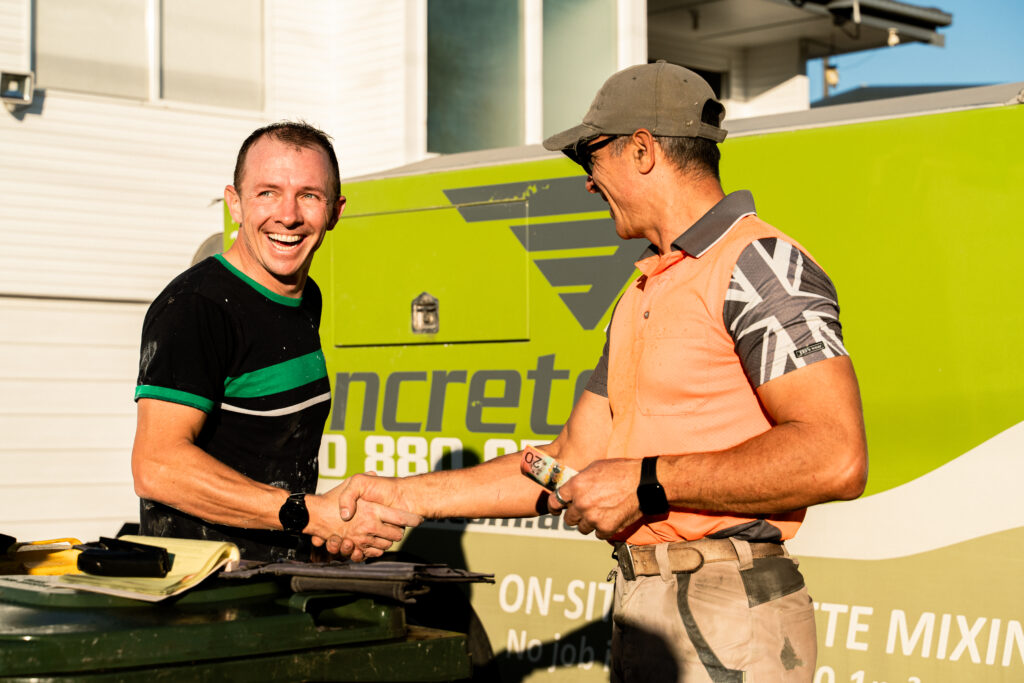
If you’re planning to install a concrete ramp and want to save on construction costs without cutting corners, Concrete Taxi is here to assist.
We mix the concrete on-site, meaning you only pay for what you use — no wasted resources, no over-ordering. Our system is ideal for home modifications where space is limited and accurate measurements matter.
Working with your builder or contractor, we help you:
- Achieve the exact amount of concrete required for your ramp
- Avoid delivery delays or high minimum order costs
- Manage your NDIS budget more effectively by reducing excess spending
Whether you’re installing a ramp at your front door, carport, or any access point around the home, Concrete Taxi makes the process easy, affordable, and reliable. We’ve been assisting Australians for years and continue to be the go-to provider for small to mid-sized concrete jobs across the country.
Final Advice
When it comes to creating an accessible home that suits your lifestyle, the ramp you choose makes a big difference. Concrete ramps offer a permanent, safe, and cost-effective solution that meets the needs of wheelchair users and others with mobility challenges — while also complying with Australian building laws.
If you’re managing an NDIS project or seeking funding for an accessibility upgrade, talk to your provider about concrete options — and when you’re ready to pour, let Concrete Taxi assist with the delivery. Consulting experts in disability care ensures that the ramp design meets specific access needs effectively.
Contact Concrete Taxi today to discuss your ramp project or get advice tailored to your site and specifications.


